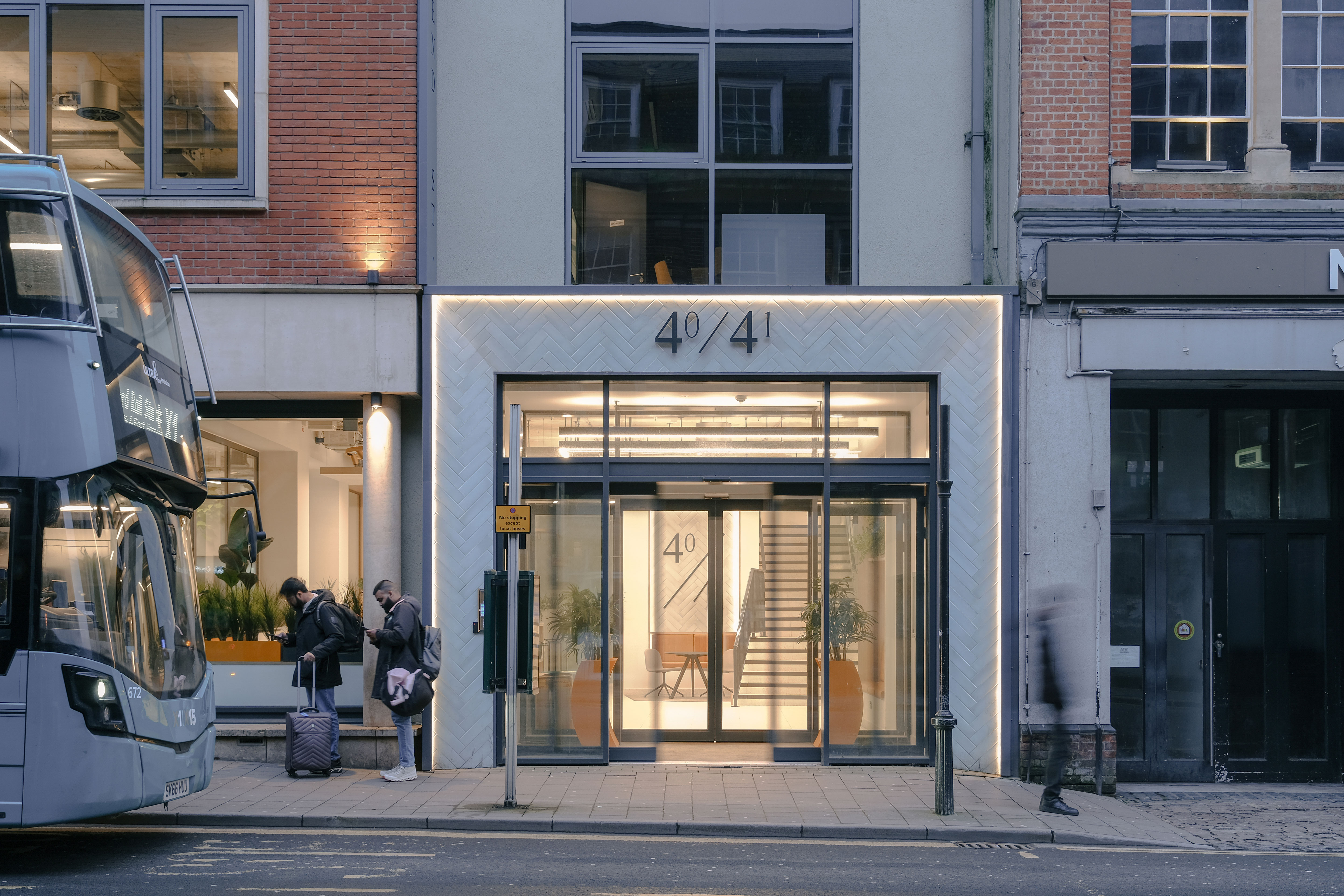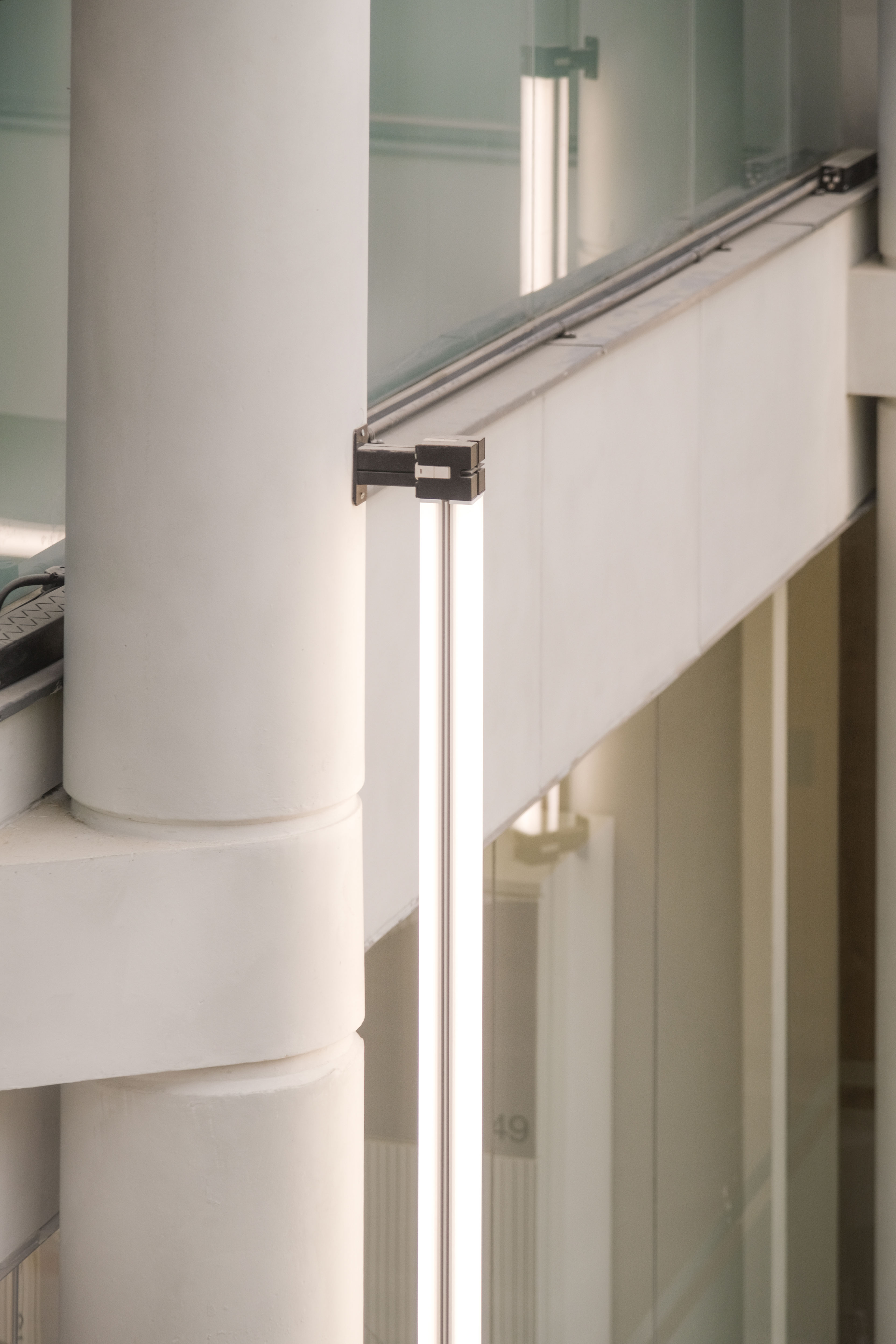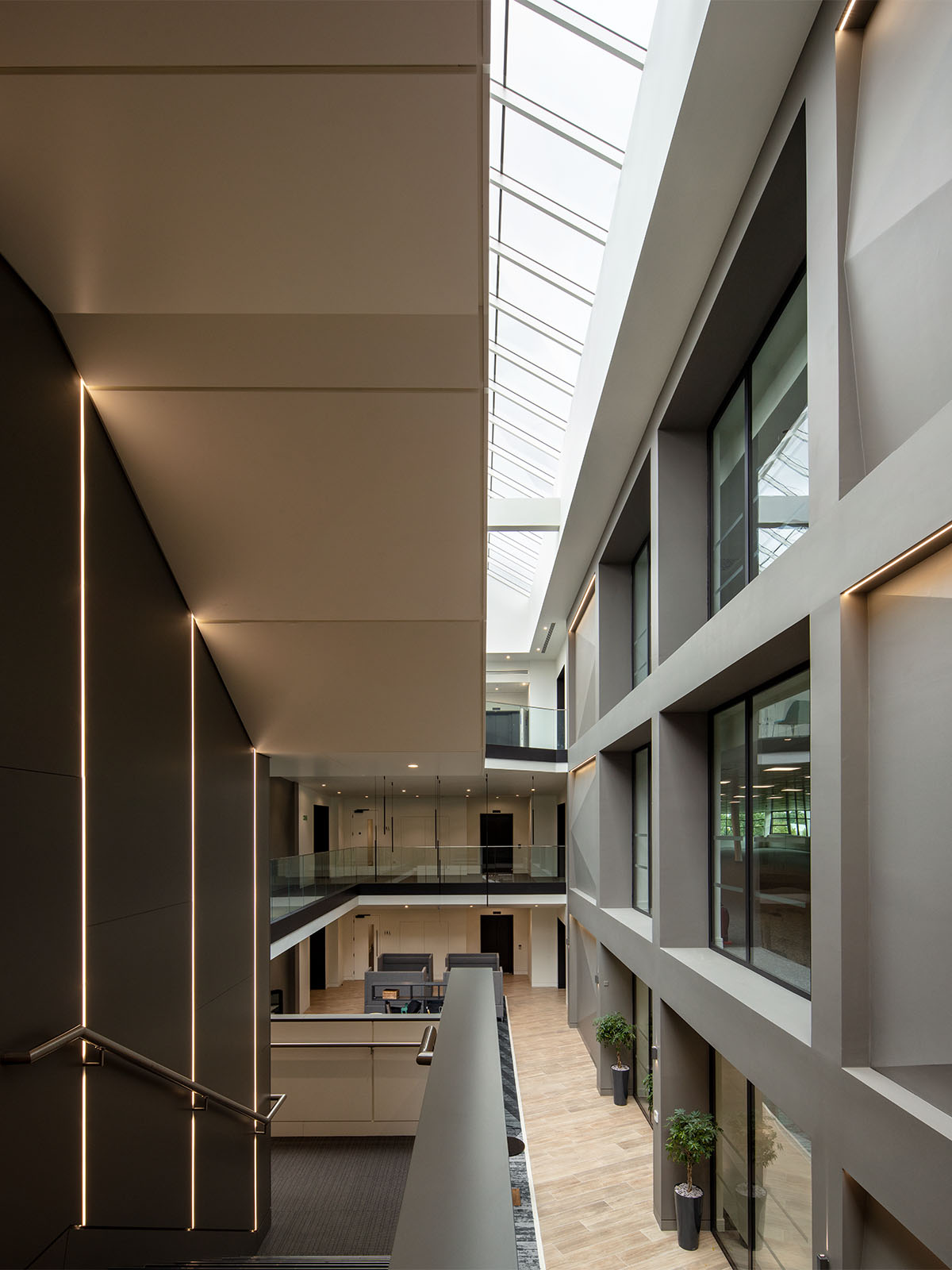

40-41 Park End Street
Located at the threshold of Oxford’s historic centre and major transport links, 40–41 Park End Street sets a new benchmark for sustainable city-centre refurbishment. The transformation reimagines a disjointed early-2000s office and retail unit into a striking, flexible and resilient workplace that prioritises user experience, long-term performance and connection to place. Spratley & Partners led the retrofit-first strategy, retaining the existing structure to significantly reduce embodied carbon while dramatically enhancing functionality, flow, and architectural presence.
Once limited by its frontage and underused ground floor, the building has been transformed with a bold new corner rotunda that signals arrival and creates an active street presence. The entrance is now clearly defined and welcoming, guiding visitors naturally inside. A lounge and new office suite replace the former unit, overcoming complex level changes through careful spatial planning and accessible design.




Across all floors, internal layouts were reconfigured to improve movement and collaboration. The reception has been redesigned to feel welcoming and professional, with a light-filled, biophilic environment that enhances the user experience.
Sustainability informed every decision, from retaining the existing structure to adding end-of-trip facilities and generous landscaping that encourages active travel and supports biodiversity. The project’s operational performance demonstrates its impact, with the whole building achieving 92 kWh/m²/year and 8.46 kgCO₂/m²/year, while the ground floor performs at 61 kWh/m²/year and 5.65 kgCO₂/m²/year. By working within the existing envelope and infrastructure, the project not only delivered substantial carbon and cost savings but also created long-term environmental value.



Close collaboration with the client and neighbouring stakeholders enabled upgrades to fire escape routes, washrooms, and circulation, ensuring long-term resilience with minimal disruption. The design integrates existing fire strategy requirements, strategically locates washrooms using existing connections, and avoids structural alterations, resulting in a fully functional, flexible workplace that supports lasting resilience.
Main Contractor
Orchard Construction
Structural Engineer
Furness Partnership
Services Engineer
Hulley & Kirkwood
Project Manager
Workman
Photography
Alex Dormon



